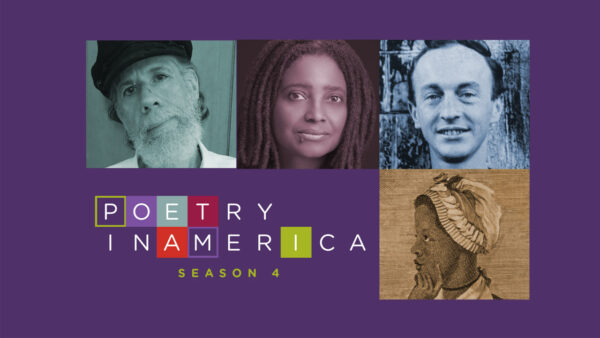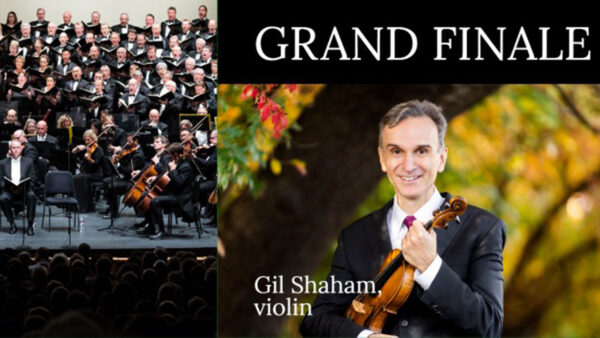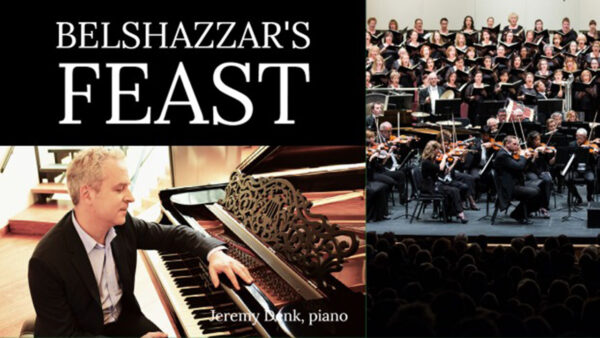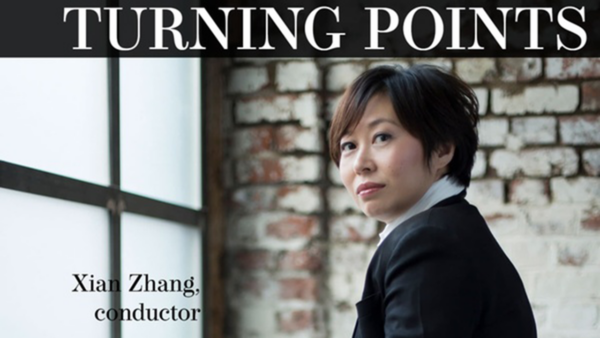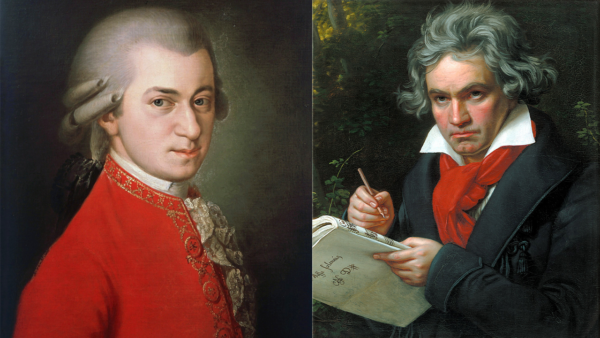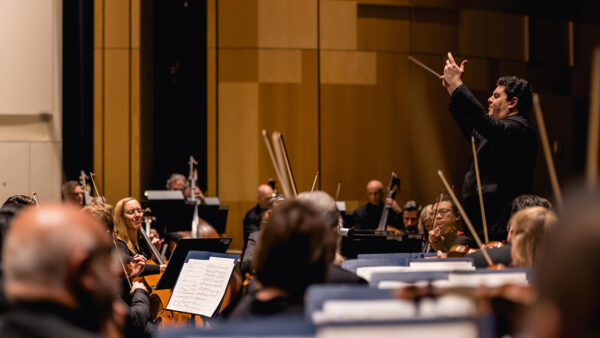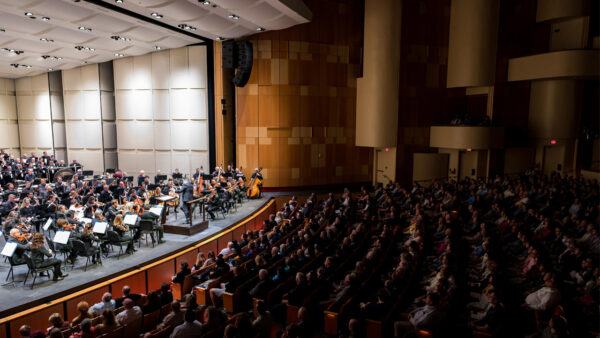Grand Finale
Nov. 27, 2023
What do think of when you hear “Grand Finale”? Images of fireworks, dancing choristers on a Broadway stage, or maybe even an incredible final touchdown at a Cardinals game might come to mind. There’s also the grand finale in the orchestral world: The full orchestra singing out at an ear-splitting fortissimo, a jaw-dropping virtuoso performance by your favorite instrumentalist, or a rousing final moment for soloists, chorus, and full orchestra. Monday night at 7:00 p.m. on KNAU Arizona Public Radio, 89.5 Classical KBACH and DTV 8.5, Classical Arizona PBS, you’ll get a little bit some of that and more when The Phoenix Symphony presents its Grand Finale, the tenth and final radio broadcast for this series. You can also listen in full-fidelity Dolby Digital surround on DTV 8.5 Classical Arizona PBS.
It has been an incredibly exciting season for The Phoenix Symphony and its Virginia G. Piper Music Director Tito Muñoz, who will be on the podium for this concert which includes Leonard Bernstein’s Chichester Psalms with countertenor soloist Benjamin P. Wenzelberg and the Phoenix Symphony Chorus, and Johannes Brahms’ Concerto in D major for Violin and Orchestra, Op. 77 with superstar violinist Gil Shaham.
Scott
But the celebratory program starts with the world premiere of the revised version of composer Kevin Scott’s Fanfare G.A.F.: An American Overture. The work was composed in 1984 in honor of Geraldine A. Ferraro nomination as the first woman running for Vice President in a major political party. Her initials make up the “G.A.F.” of the work’s title and those notes, G, A, and F, create a musical theme honoring her throughout the work.
Originally conceived as a fanfare, the scope and scale of the work grew until it was a full-fledged concert overture, even being called an “optimistic romp for orchestra.” Yet, the composer would eventually have it withdrawn and revised after the premiere for future revision. When The Phoenix Symphony’s Tito Muñoz approached Mr. Scott about including the work on this program, it was an opportune time for the composer to reexamine the piece and make those revisions.
Bernstein
The next work on the program is also by an American composer, Leonard Bernstein’s Chichester Psalms. The Cathedral of Chichester in Sussex, England reached out to Bernstein asking for a piece for an upcoming festival, which would utilize their combined choirs and full instrumental resources. Cheekily, they also requested, “Many of us would be very delighted if there was a hint of West Side Story about the music.”
Bernstein took a sabbatical from his position as the New York Philharmonic Music Director in order to concentrate on composing, which he hadn’t had time to do with his NY Phil responsibilities. Bernstein dug into composing, experimenting with 12-tone techniques and experimenting with the possibilities of music and sound. Although he was happy to stretch himself artistically, he said, “But after about six months of work I threw it all away. It just wasn’t my music; it wasn’t honest. The end result was the Chichester Psalms which is the most accessible, B-flat majorish tonal piece I’ve ever written.”
Although the commission came from England, the world premiere was in New York City with Bernstein leading his New York Philharmonic and choruses in 1965. The work uses texts from Psalms 108 (“Awake, psaltery and harp!”), 100 (“Make a joyful noise unto the Lord”), 23 (“The Lord is my shepherd, I shall not want”), 2 (“Why do the nations rage”), 131 (“Lord, Lord, My heart is not haughty”), 133 (“Behold how good,And how pleasant it is”), all sung in Hebrew.
The Phoenix Symphony Chorus, under the direction of Chorus Master Thomas Bookout, participates in this performance, as does 23-year-old countertenor Benjamin P. Wenzelberg. A multitalented young musician, Mr. Wenzelberg is also a symphonic and operatic conductor, composer, and pianist.
Brahms
Ending the concert, which was taped on May 13, 2023, is Johannes Brahms’ Concerto in D major for Violin and Orchestra, Op. 77. The work, of course, is a favorite. Joseph Joachim premiered the work and worked closely with Brahms on its creation. They discussed Beethoven’s violin concerto, composing for the violin, and more. Ultimately, Joachim had high esteem for the Brahms violin concerto. He said it was one of the four most important concerti for violin, along with Beethoven, Mendelssohn, and Bruch. As analyst John Horton has put it, “That Brahms should have ventured upon a Violin Concerto in D with the sound of Beethoven’s in his ears was in itself an act of faith and courage; that he should have produced one worthy to stand beside it, is one of the triumphs of Brahms’s genius.”
The final movement of Johannes Brahms’ only violin concerto, a technically difficult work so triumphantly celebrating the instrument that when conductor Josef Hellmesberger quipped that the piece was “a concerto not for, but against the violin,” violinist Bronislaw Hubermann retorted that it was “for violin against orchestra—and the violin wins!”
This would have pleased Brahms, who was very conscious of his place in musical history and his responsibility to honoring tradition while expanding on those traditions. In an interview with Violinist.com, Gil Shaham, the soloist for our performance, said, “I think, more than any other piece, the Beethoven Violin Concerto is connected, it’s related to the brahms violin concerto. You know, they’re like relatives! They are like sisters born of the same muse and they share the same dna!”
Gil Shaham is one of the foremost violinists of our time; his flawless technique combined with his inimitable warmth and generosity of spirit has solidified his renown as an American master. The Grammy Award-winner, also named Musical America’s “Instrumentalist of the Year,” is sought after throughout the world for concerto appearances with leading orchestras and conductors, and regularly gives recitals and appears with ensembles on the world’s great concert stages and at the most prestigious festivals.
An exciting Grand Finale to this series of broadcasts by The Phoenix Symphony. You will hear the full orchestra singing out at an ear-splitting fortissimo, a jaw dropping virtuoso performance by your favorite instrumentalist, and a rousing final moment for soloists, chorus, and full orchestra.
Stay tuned after the official concert is over as we dip into the archives to enjoy Maestro Tito Muñoz conducting the music of Giuseppe Verdi, Jean Sibelius, and Johann Strauss II.
Many thanks to everyone who has joined us for this series celebrating the talents of The Phoenix Symphony and working diligently behind the scenes to bring the series to you. Thank you for joining us.
Featured in this episode:
Bernstein - Chichester Psalms for Chorus and Orchestra - The Phoenix Symphony; Tito Munoz, conductor; Benjamin P. Wenzelberg, countertenor; The Phoenix Symphony Chorus
I. Psalm 108:2; Psalm 100
II. Psalm 23; Psalm 2:1-4
III. Psalm 131; Psalm 133:1
Brahms - Concerto in D major for Violin and Orchestra, Op. 77 - The Phoenix Symphony; Tito Munoz, conductor; Gil Shaham, violin
I. Allegro non troppo
II. Adagio
III. Allegro giocoso; ma non troppo vivace
Verdi - Overture to La Forza del Destino
Sibelius - Symphony No. 5 in E-flat Major, Op. 82
III. Allegro molto
J. Strauss - Emperor Waltz, Op. 437



